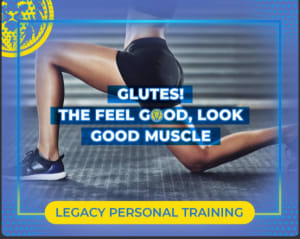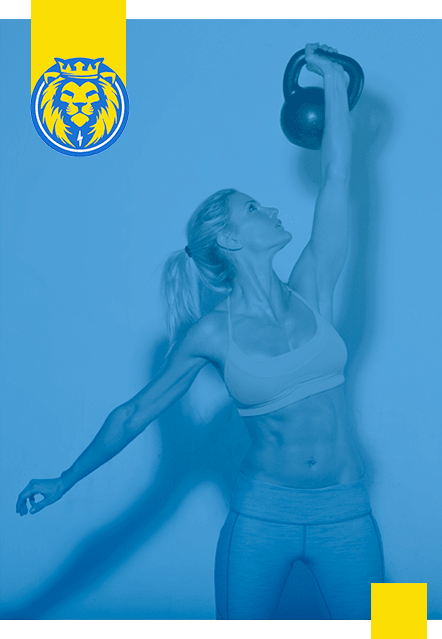
GLUTES!
The Feel Good, Look Good Muscle
Your body is a marvel of engineering, and within its complex architecture, the muscles of your legs, including the mighty gluteus maximus, play a pivotal role. These muscles, spanning three crucial joints – the hips, knees, and ankles – provide essential support and function. In this comprehensive guide, we'll dive deep into the world of the gluteus maximus, exploring its anatomy, functions, benefits, and exercises to help you maximize its potential. So, let's embark on a journey to understand and strengthen this powerhouse.
The Gluteus Maximus: A Brief Introduction
The gluteus maximus is one-third of the formidable trio known as the glutes. While many perceive the "glutes" as a singular entity, they are, in fact, a group of three muscles: the gluteus maximus, gluteus medius, and gluteus minimus. The gluteus maximus, the largest among them, holds the primary responsibility and aids the other two glute muscles in various functions.
In individuals leading an active lifestyle, the glutes typically stand as one of the body's most robust muscle groups. This is due to their crucial role in supporting the sacrum and femur, integral areas of the lower and mid-body where the glute muscles attach. Together, the glutes facilitate essential movements such as lifting and lowering when sitting, thrusting, climbing stairs, jumping, and maintaining lower-body balance. For a well-rounded lower body, the glutes need to be exercised in harmony with other leg muscles, including the quadriceps and calves.
The Glutes in Action: What Do They Do?
The gluteus maximus, at the forefront of the glute trio, boasts a wide range of functions that extend far beyond aesthetics. Here's a glimpse of its crucial roles:
Facilitating Running and High-Intensity Activities: Research suggests that the gluteus maximus's strength is particularly vital for activities demanding speed, such as running and jumping. Some experts even propose that the evolution of human glute development is intricately tied to our capacity for running.
Stabilizing the Pelvis and Supporting the Hips: A stable pelvis is essential for maintaining balance and distributing weight and force effectively within the body. Strong glutes prevent muscular imbalances and provide support to the hips, reducing the risk of injuries and performance issues.
Lower Back Support: Weak glutes can contribute to lower back pain, a prevalent complaint among those leading a predominantly sedentary lifestyle. Strengthening the gluteus maximus can help improve posture and alleviate pressure on the lower back.
Femur Stabilization: The glutes play a crucial role in femur (thighbone) stability. They aid in the rotation of the femur, both internally and externally, facilitating movements like lifting the leg out to the side or to the back.
The Anatomy of the Gluteus Maximus
To comprehend the gluteus maximus fully, it's essential to understand its anatomical placement. These muscles are situated in the gluteal region, which encompasses the buttocks. They attach to the fascia tissue of the lumbar region (lower back), lie below the gluteus medius (the upper buttocks), and above the biceps femoris (the muscles in the back of the thighs). The gluteus maximus also connects to the sacrum, sacrotuberous ligament, and coccyx bones (tailbone).
The gluteus maximus anchors itself to the front of the legs by inserting into the gluteal tuberosity of the femur. Another insertion point is the iliotibial tract, which connects to the tibia. The glutes receive their nerve supply from the "inferior gluteal nerves" (L5, S1,2).
Guarding Against Gluteal Injuries
While the gluteus maximus is a robust muscle, improper training techniques or overuse can lead to injuries. Overtraining, especially without adequate rest or stretching between workouts, can cause all leg muscles, including the glutes, to become overused and vulnerable to injury. Injuries typically occur when repetitive movements engage the muscles in a single direction or plane.
Conversely, a sedentary lifestyle, characterized by prolonged hours of sitting, can lead to gluteal weakness and instability, a phenomenon sometimes referred to as "gluteal amnesia." This condition results in underused and overstretched glute muscles, leading to weakness and stiffness. Common complaints associated with weak gluteus maximus muscles include:
Lower Extremity Injuries: Weak glutes can increase the risk of injuries in other leg areas, such as the ankles or knees, due to instability.
Hip Pain: Gluteus maximus weakness can result in hip tightness and hip flexor pain, particularly in individuals who neglect stretching and full range of motion exercises.
Pelvic Instability: Weak glutes can compromise pelvic stability, contributing to running injuries, lower back pain, and lower leg discomfort.
Low Back Pain: The glutes play a crucial role in maintaining proper posture and balance, reducing the risk of lower back pain.
Difficulty in Physical Activities: Inadequately developed glutes can impair performance in various activities, from dancing to running, or even something as simple as transitioning from sitting to standing.
Reduced Range of Motion: Tightness and weakness in the glutes can limit your range of motion during daily activities and workouts.
The Best Exercises and Stretches for Gluteus Maximus
Now that we've delved into the gluteus maximus's importance and potential issues, it's time to explore exercises and stretches that can strengthen and enhance its functionality. Incorporate these exercises into your fitness routine three to four times a week for optimal results. You can choose to perform a specific number of reps or engage in a circuit-style workout with timed intervals. Be sure to gradually increase intensity as you progress.
Weighted Squats: This classic exercise involves holding a barbell or free weights at shoulder height while performing squats. It engages your glutes effectively and supports overall leg strength and stability.
Lunges: Lunges are excellent for targeting the glutes. They involve stepping forward with one foot and lowering your body until the thigh is parallel to the ground. Lunges can be performed in various directions for a well-rounded workout.
Deadlifts: This exercise helps strengthen the glutes while also engaging the lower back and hamstrings. It involves a hip hinge movement with weights, promoting excellent posterior chain development.
Step-Ups: Utilizing a block or bench, step-ups are a fantastic way to engage the glutes while also training the quads. They mimic activities like climbing stairs and are highly effective for lower body strength and balance.
Sprints: For a cardiovascular boost and intense glute activation, incorporate sprints into your routine. Sprinting engages the glutes more significantly than slower-paced activities.
Glute Bridges: A staple in glute-focused workouts, glute bridges target the posterior chain and promote core engagement. They help develop stability and strength in the lower body.
Your journey into the world of the gluteus maximus has revealed that these powerhouse muscles are not just about aesthetics; they are the foundation of strength, stability, and overall well-being. From supporting your pelvis to powering your runs and squats, the glutes are indispensable. Neglecting the health and strength of your glutes can lead to a cascade of issues, from lower back pain to reduced athletic performance.
At Legacy Personal Training, we specialize in helping individuals like you harness the full potential of their bodies. Our expert team is here to guide you, motivate you, and personalize your fitness journey to ensure you achieve your goals. Whether you're seeking to strengthen your glutes, improve overall fitness, or address specific health concerns, our experienced trainers are dedicated to your success.
Schedule a Fitness Consultation Today!
- Unlock the power of personalized training and take the first step toward a stronger, healthier you. During your fitness consultation, we will:
- Assess your unique fitness goals and aspirations.
- Tailor a workout plan designed to target your specific needs, including glute strengthening.
- Provide expert guidance on exercises, form, and nutrition to optimize your results.
- Address any questions or concerns you may have about your fitness journey.
Your glutes are just the beginning. With Legacy Personal Training, you'll have the support and expertise you need to transform your fitness and well-being comprehensively. Don't wait any longer to invest in your health and strength.
Schedule your fitness consultation today!

